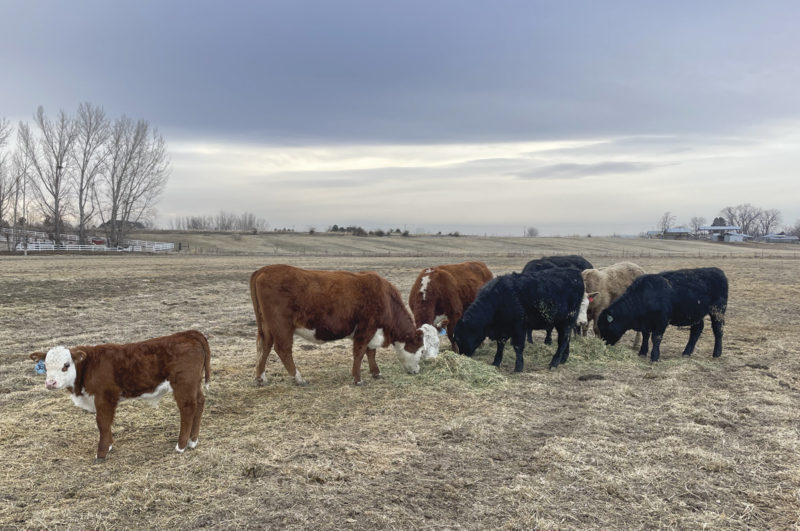We are just starting calving season on our operation, and this year, we’ve got a rainbow herd. For years, our herd was black as death as we worked on building a reputation as a bull seller. We shifted a few years ago to include a finish program. With that decision, we transitioned our breeding to include bulls of varying colors to get some heterosis into the herd. It was also because last year, our then-9-year-old daughter started to show a huge interest in the cattle, so my husband, Craig, let her pick out (with guidance) the semen we’d use for the year. She spent the late spring poring over bull catalogs. I don’t think Craig had ever been prouder.
We’ve had four calves born so far, and all of them came out of different bulls, and all of them are different colors. The first was a purebred Hereford bull calf – red body and white face with goggles. The second calf was a brockle-faced bull calf – his mother is a black baldy, and the bull was an Angus. The third, born early on a Sunday morning, was the cutest heifer calf I’ve ever seen. She is silvery gray. Her mother is a black baldy and the bull a Charolais. Craig says we can’t keep her because Charolais are not good mothers. I told him, we’d see how she grew up – she’s only half Charolais anyway. The final of the four has a complicated parentage. He is a brown baldy bull calf. His mother is 3/4 Angus and 1/4 Jersey – the last remnant of a milk cow we had when the 9-year-old was a toddler, and his sire is a Hereford bull. I know the market would tell us that we should have a “uniform calf crop,” but this is so much more fun.
Over the years, the kids haven’t generally named our calves unless they were the calves the oldest used for 4-H. They were all black and hard for little eyes to tell apart. This year, it’s a different story. The four born have characteristically compatible names. In the order of birth, we have Ginger, Cookies, Smokey Mountain and Big Brown. When we feed, the kids look for each calf to ensure they are with the herd, have nursed and generally “look happy,” as the 4-year-old says. It has also led to great biology lessons. Our oldest, Cora, couldn’t figure out how we’d guessed accurately on all the calves’ colors before they were born. So we talked to her about the dominant and recessive genes in each breed and how that led to their colors, and how there is a predictable pattern for coat colors in cattle. She will be drawing our Punnett squares in her spare time soon.
These first four calves were the outliers for the herd, bred on an early A.I. breeding when Craig caught them in heat. We have a big set of A.I. bred calves due later in the month, and we will have some color variations in them, much to my and the kids’ pleasure. The cows were hand-bred to compatible Angus, Hereford or Charolais semen. The ones that didn’t take to the A.I. were bull-bred to our plain Angus bull. The calves born in March will be a little more uniform. However, we still hope for a few surprises. Last spring, my dad purchased a few Hereford and other heifers of mixed origins to run with our cows – we will see how they turn out. I’m sure Cora will put in her guesses.









